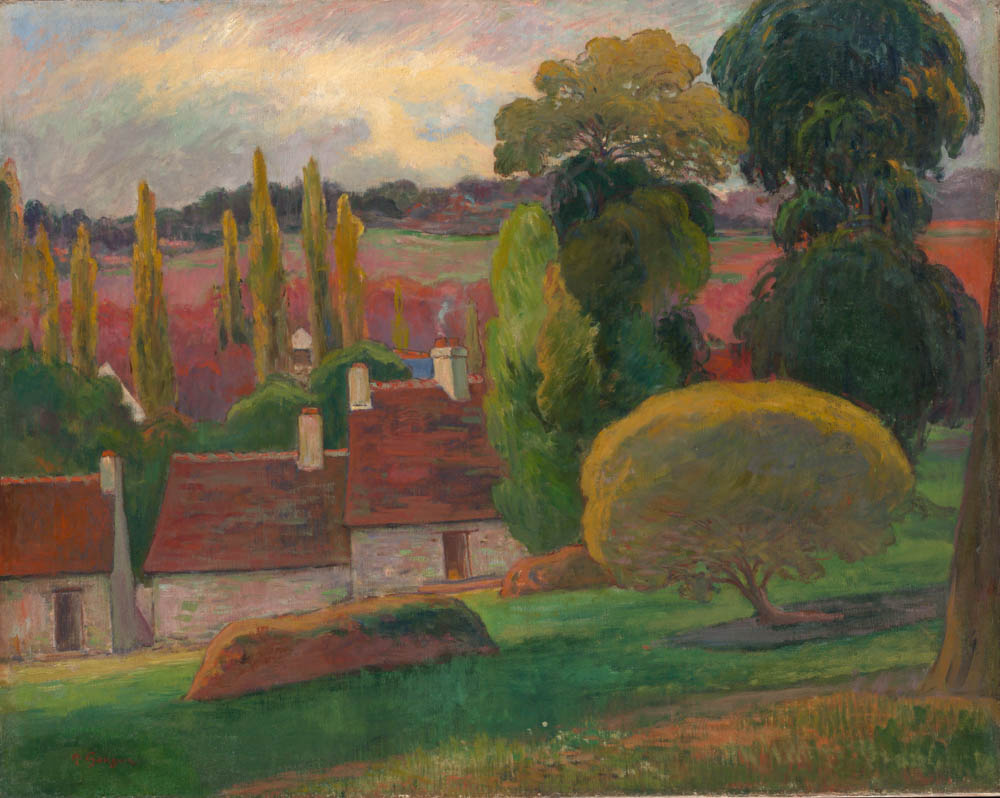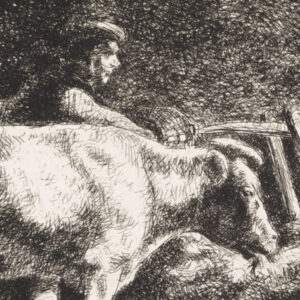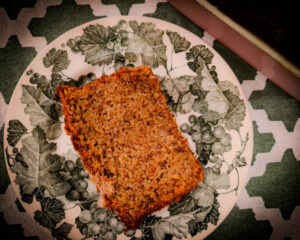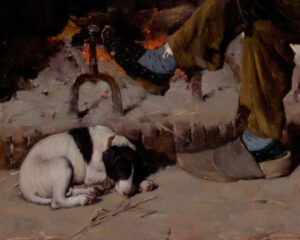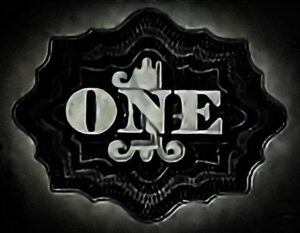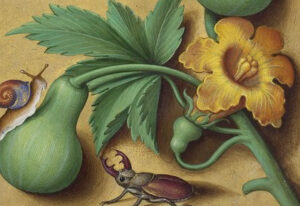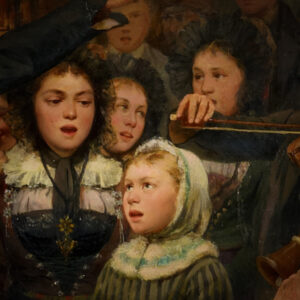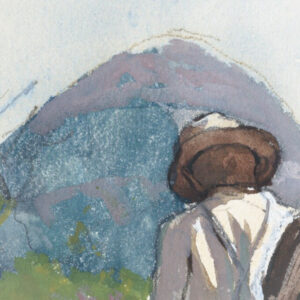So Long Suburbia

Mrs. Gina Loehr
My mother-in-law, Rosie, grew up on a farm and always wanted to marry a farmer. Her dream came true when she met Norm — who lived a staggering eight miles away — and married him at eighteen years old. She farmed by his side, raised eleven children with his help, and lived with him until the day he died in the same house on the family homestead that his grandfather first occupied in 1880. She loved both her husband and his way of life. It was her way of life too. Some days, I envy her.
I grew up in the suburbs. I always wanted to marry a musician and move to a big city, but I fell in love with a farmer and although he can sing like Toby Keith when he’s in the right mood, he never learned to read a note of music.
I moved to the farm on our wedding day. That night, still clad in my massive white gown, Joe picked me up and carried me across the threshold into the century-old farmhouse that was to become my new home. Crossing over that line was more symbolic than I possibly could have realized at the time. On that day, I left behind my urban inclinations and became a Farmer’s Wife who lived on a six-hundred-acre dairy farm in southeastern Wisconsin.
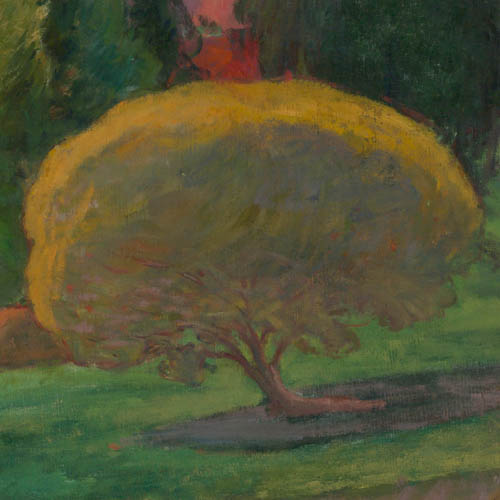 Farmer’s Wife wasn’t a role I was well prepared for. The whole thing felt kind of like a mythical fairy tale with the embarrassing insignificance of a nursery rhyme. Was I really pledging to chant e-i-e-i-o for the rest of my life and resigning myself to a fate of decapitating blind mice? I remember my boss from Cincinnati getting confused and thinking that my boyfriend was a lumberjack. Paul Bunyan, Old MacDonald, what’s the difference? All the stuff of storybooks, those farmer / logger / earthy guys who did work that nobody still does in the modern world. Right?
Farmer’s Wife wasn’t a role I was well prepared for. The whole thing felt kind of like a mythical fairy tale with the embarrassing insignificance of a nursery rhyme. Was I really pledging to chant e-i-e-i-o for the rest of my life and resigning myself to a fate of decapitating blind mice? I remember my boss from Cincinnati getting confused and thinking that my boyfriend was a lumberjack. Paul Bunyan, Old MacDonald, what’s the difference? All the stuff of storybooks, those farmer / logger / earthy guys who did work that nobody still does in the modern world. Right?
Wrong, it turns out. There is in fact a thriving subculture of real-life farmers that operate actual farms. Farmers have families and hobbies and cars and opinions and animals and annual conventions, and they are not all ancient men wearing blue overalls and straw hats. In fact, I have yet to meet one of those. And to top it off, some of them are women.
Farmers have families and hobbies and cars and opinions and animals and annual conventions, and they are not all ancient men wearing blue overalls and straw hats.
The indispensable, life-giving, and often grueling work of a farmer is anything but child’s play. Every human being on planet earth depends upon the commitment and generosity of farmers – many of whom toil long hours in challenging conditions for the love of the land in spite of little monetary reward. Without them, we would not be able to walk into a grocery store – or drive to the pickup canopy – and fill our car(t)s with sustenance. I suppose I always knew food came from farms; I just didn’t realize that farmers were, well, real people. Until I met Joe.
I had a bit of a crash course after meeting my own handsome farmer. I learned, for example, that the green stuff I drove by on my way from Ohio to Wisconsin was usually an intentionally planned and planted field of alfalfa or rye grass to feed livestock, not just somebody’s big front lawn or an empty space between fields of corn. The trips we made back and forth through the vast stretches of Indiana farmland always left me astonished when I observed how fascinated Joe was by that rural midwestern landscape, and how much information he could share with me about the fields he saw out of the corner of his eye as we whizzed along I-65.
On my first visit to Loehr Dairy I also learned that the metal gate things that the noses of cows were often stuck through weren’t cruel devices that paralyzed the bovine creatures in a headlock all day long. They were just freely moving cow cubbies that enabled the girls to space out and enjoy their lunch without battling for dominance. When you bring a group of cows together to enjoy a comfortable, sheltered environment, you run the risk of Bossy bullying Bessy. A few tricks of the trade help everybody get their fair share. The metal thingies are part of that wisdom. I guess I never watched the cows I drove by for longer than twenty seconds, because if I had I would have noticed that they could move around freely at their leisure in what, it turns out, is called a free stall barn. Ah.
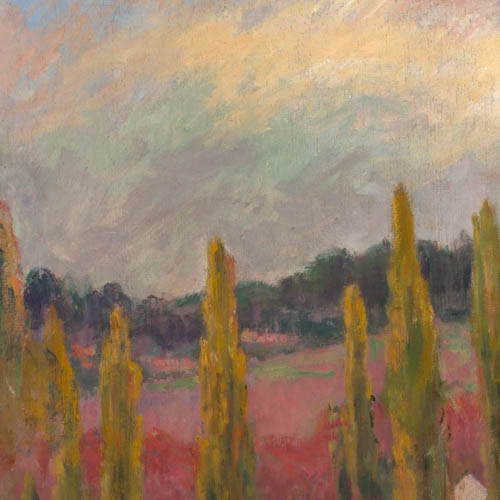 Did I mention that I learned cows were girls? Most of the time, anyway — at dairy farms at least. It probably took me a good three years to stop calling the heifer calves “he.” Now, I cringe when I hear a non-farm visitor do that. But then I remember the pre-rural, suburbanite me and a wave of merciful compassion floods my soul. I, too, was so ignorant about the realities of animal husbandry and the work that goes on at these places upon which so much of our livelihood, our health, and our survival depends: family farms.
Did I mention that I learned cows were girls? Most of the time, anyway — at dairy farms at least. It probably took me a good three years to stop calling the heifer calves “he.” Now, I cringe when I hear a non-farm visitor do that. But then I remember the pre-rural, suburbanite me and a wave of merciful compassion floods my soul. I, too, was so ignorant about the realities of animal husbandry and the work that goes on at these places upon which so much of our livelihood, our health, and our survival depends: family farms.
There was a time when I knew nothing about the depth of love that a farmer has for his animals and the intimate connection he feels to his land. There was a time when I hadn’t tasted for myself the profound beauty and significance of life on the farm. Rosie understood it all from day one. I’m still learning, and sometimes the process is painful. Those are the days I envy the preparation Rosie had for her position as Farmer’s Wife. But sometimes, like right now, I’m grateful for the chance to cross over that great divide. I may be one of very few people who have left the comfort of suburbia for the sweat, the smells and the solitude of the farm, but it gives me a voice that needs to be heard. It’s good here on the other side, my friends. There’s a beauty, an importance, a necessity to this life that is too often missed by the untrained eye.
Those who are born into it can see it clearly. But those who gaze upon it like a distant mystery might need a kind of agricultural coach to journey alongside them as they contemplate the values, the significance, and maybe even the call of the primordial vocation of farming. I enjoy every chance I get to be that kind of mediator for folks.
But really, the best thing to do is to go find yourself a farmer. You don’t have to marry him. Just step on his soil. Resolve to inhale deeply while you’re standing in his barn (trust me, it works better to just give in than to try to resist). Listen to the stories and ask your questions. I bet you’ll be pleasantly surprised by what you see when you take a good look at the view from the farm.
